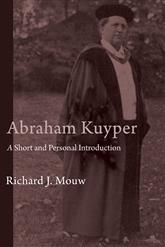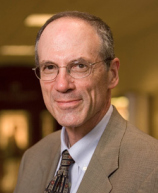
The sixth and concluding post in a series drawing from and interacting with Richard Mouw’s Abraham Kuyper: A Short and Personal Introduction (Eerdmans, 2011). Stay tuned for additional series by Dan Jesse applying Kuyper’s insights to our context in higher education.
We must continue to move forward in the tradition put forth by Luther. The Reformation has a famous saying, Ecclesia reformata, semper reformanda! The church needs to reform, and forever be reforming. What is not meant in this motto is that we need to get rid of our tradition and forget what those who went before us taught us. We can, and have learned from Kuyper. It is now time to push ahead of what Kuyper said and see his legacy.
Kuyper has multiple statements in his work that feel completely out of place in the 21st first century. And that should not surprise us. For he, like all of us, was a man of his time. Mouw states:
Kuyper was very much a person of his day. This means that on some subjects he had views that were seriously misguided. That is certainly true . . . of his racial views. On some other subjects he was, at the very least, intemperate, given to rhetorical excesses when dealing with other positions. (Mouw, 75-76)
Mouw, it is important to note, adds on that “he was also profoundly insightful about many important issues – so insightful that is well worth the effort” not only to read him, but also to move some of Kuyper’s contentions and thoughts forward.
According to Mouw,
Kuyper was a public theologian without peer who engaged in theological reflection . . . and in other roles as well. (76)
Kuyper’s role as a public theologian left him with many weaknesses. Kuyper was not necessarily trying to move the state of academic theology forward. He was trying to bring a better and more rounded view of theology to the masses. In today’s day and age, he would be considered a “pop” theologian. And there is nothing wrong with this, as we need this role to be fulfilled.
When we look for a more nuanced view of what Kuyper put forth, we do not need to look far in history. In fact, we just need to look for another face in the Free University. Kuyper’s colleague Herman Bavinck, who was a few years younger and more involved in the academic side of theology, “who stuck with a carefully pursued scholarly agenda.” (76)
“Bavinck’s tone was more moderate, and he treated views with which he disagreed with much charity.” (77) Bavinck insisted on a program in which we search for God’s Truth, not just in the Church, but in any area where it is manifest. Bavinck held more strongly to the idea that all Truth is God’s Truth than Kuyper did. Bavinck held that all Truth is “an illumination by the Logos, a working of God’s Spirit” (77) and illustrates the breaking through of what Kuyper called Common Grace. For Bavinck, we cannot reject thought that does not have same philosophical and theological underpinnings as our own.
Bavinck’s emphasis on this continues when we speaks of the Church as a whole. Bavinck reminds us:
the Catholic righteousness by good works is vastly preferable to a protestant righteousness by good doctrine. At least righteousness by good works benefits one’s neighbor, whereas righteousness by good doctrine only produces lovelessness and pride. (77-78)
In saying such, Bavinck is trying to get us to recognize that our thoughts on grace and salvation are not always right. It is better to be less doctrinally sound if we are more loving and gracious to those around us. We often find ourselves thinking that other denominations are worse Christians then us, when in fact, they might be living a more Christ-like existence.Furthermore, [Bavinck continues] we must not blind ourselves to the tremendous faith, genuine repentance, complete surrender and the fervent love for God and neighbor evident in the lives and works of many. (78) “Furthermore,” Bavinck continues “we must not blind ourselves to the tremendous faith, genuine repentance, complete surrender and the fervent love for God and neighbor evident in the lives and works of many (78) Christians that are not part of the Reformed tradition. In saying this, Bavinck takes Kuyper view of pluriformity in the Church further reminding us that “The Christian life is so rich that it develops its full glory not just in a single form or with the walls of one church.” (78) Kuyper calls us to be better Reformed christians, while Bavinck issues forth a call to be better followers of Christ.
Just like we need to move forward from Kuyper, we need to continue to move forward from Bavinck. Geerhardus Vos, who was a friend of Kuyper and professor at Princeton Seminary, took Kuyper’s view of the Holy Spirit further than Kuyper would by “arguing that the primary focus of the Holy Spirit’s ministry is to prepare the whole creation for God’s glorious future” which will “display the gathering in of the works of culture into the eternal Kingdom.” (89)
More recently, Al Wolters, in his Creation Regained, argued for a fuller and renewed view of all things belonging under the Lordship of Christ. Brian Walsh and Richard Middleton took Kuyper’s idea of ‘world and life view’ further in their book The Transforming Vision. In it, the pair “offered a concise way of understanding (of) what goes into having a world view.” (90) In their work, they offered that our worldview is made up of the answers to four seemingly simple questions of “Who am I? Where am I? What’s wrong? What is the remedy?” (90).
Mouw is quick to point out that the moving forward of Reformed theology does not always come from inside of the Reformed world. Mouw points to the Catholic theologian and philosopher Josef Pieper who argued that in the Christian life,
God wants us to engage in beholding, in a special kind of ‘seeing’. As Pieper put it . . . we have to look carefully at people and things, directing our gaze to more than ‘the tangible surface of reality.’ (92)
Pieper himself took this thought not from the church fathers, but from the early Greek philosopher Anaxagoras, of all places.
While Kuyper was more worried about what our worldview is, Mouw, Middleton, Walsh, Wolters and Pieper are more inclined to talking about “engaging in worldviewing.” (93) This shift moves us from a more passive stance into an active movement.

With the emphasis now placed on being active in the world, we need to continue to move on from the deep legacy that Kuyper gave us. Mouw ends his work on Kuyper by quoting at length the church historian Mark Noll, and we shall do the same. Noll stats that Kuyper’s proclamation that “not one square inch does not belong to God” are the truest words that “could ever be spoken” as it gives us
[a] dramatic picture of Christ, transfigured in glory, hand outstretched, finger extended in commanding power, standing over the halls of Congress, the White House, the United nations, the state legislature, the local school board, the tax assessor’s office, and the weary citizen sitting at home reading the front page of the local newspaper, and declaring with full yet winsome authority, ‘This too is mine!’ (133)
Noll continues to say “that this picture is not quite complete.” (133) We must remember the price that such a statement comes with. The “footprints are spattered blood. And the hand that points is marked with a wound.” (133) We must remember that Jesus “longs for the day – a day that is surely coming – when he will say a joyful “Mine!” over the creation that he has made new.” (134) For the “Mine!” that is now declared comes with sadness as we still rebel against our Creator.
This is the legacy of Kuyper, that
Christians must care deeply about culture and they must recognize that true cultural obedience to their Lord has to take place under the cross. (136)
Without our renewal taking place in the shadow of the Cross, it is in vain and for naught.
Adjunct Professor of Philosophy at Grand Rapids Community College and Kendall College of Art and Design. MA in Philosophical Theology from the Institute for Christian Studies, BA in Philosophy and Worldview Studies from Cornerstone University.

Leave a Reply